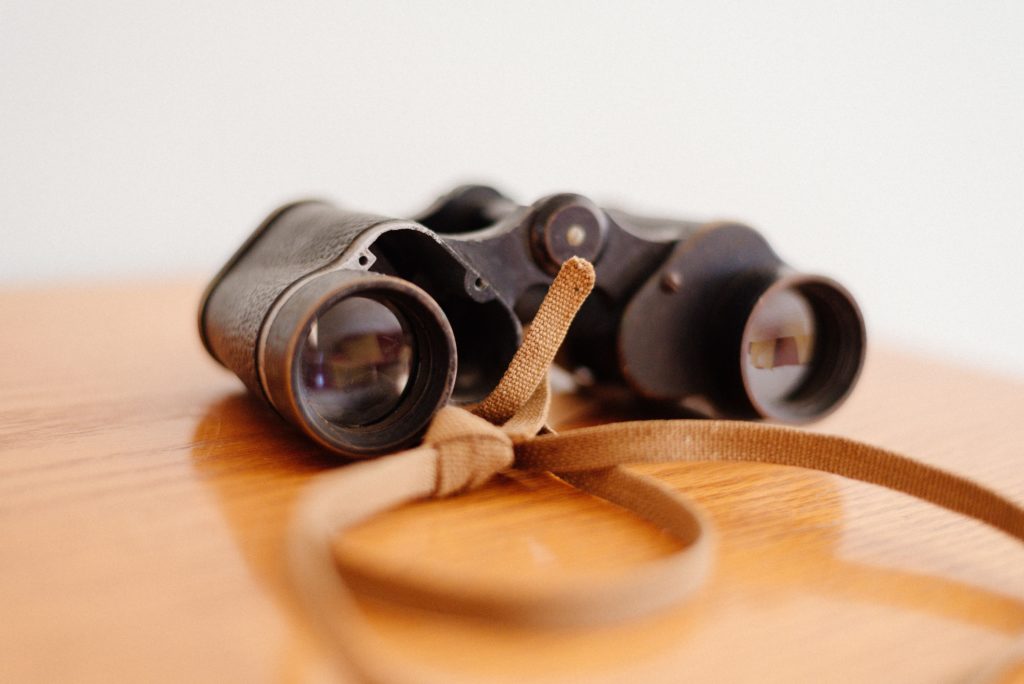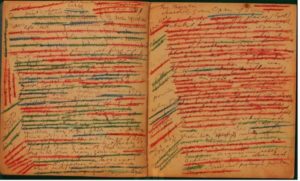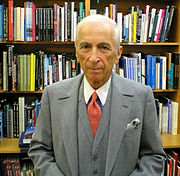
I’d heard the story many times, but I still couldn’t believe it.
Let’s face it, it sounded a little strange.
Gay Talese, the acclaimed narrative writer, a pioneer of New Journalism, pinned his manuscript pages to the wall of his office.
He then walked across the room to his desk. On it rested a pair of binoculars.
He picked them up and trained them on his pages to study them word by word.
Or so the story went.
Bizarre. Perhaps. But it seems to have worked.
Talese is the author of books and magazine articles that set the standard for narrative writing. One of them, “Frank Sinatra Has a Cold,” famously demonstrated how you could write a profile without actually interviewing the subject.
Talese wouldn’t be the first writer to turn to a ritual, quasi-religious behavior.
Rita Dove, the former U. S. Poet Laureate, wrote by hand, standing up at a lectern with a candlestick on it. She wrote at the end of the day. She lit the candle and as the burning tallow began to flicker on the page, she began to compose.
When John Steinbeck was writing his classic novel ‘East of Eden,” he started each day by writing a letter to his editor Pascal “Pat” Covici.” By his side sat twelve round pencils sent spinning twice a day through an electric sharpener, each sharpened tip enough to last a page.
Gail Godwin, the novelist (“A Mother and Two Daughters,” Grief Cottage“) and essayist, lights two different kinds of incense. Godwin relies on other totems: crisp new legal pads and new No. 2 pencils with erasers that don’t leave red smears.
Rituals, if these acclaimed writers demonstrate, matter to writers. They are part of their process, almost religious-like gestures designed it seems to summon the Muse.
Allure of rituals
The rituals of successful writers hold a special allure for those trying to emulate their success.
Over the years, I’ve collected many examples. Unfortunately, many are unattributed. They may be apocryphal, their authenticity dubious.
But I’ve seen a picture of Rita Dove standing at her desk with the lighted candle glowing.
On the Internet, I found an image of a notebook page that James Joyce marked up with red crayons.
In her slim but rich and meticulously researched book, “Odd Type Writers:
From Joyce and Dickens to Wharton and Welty, the Obsessive Habits and Quirky Techniques of Great Authors,” Celia Blue Johnson does a remarkably thorough job documenting the rituals, working habits and environments of nearly 200 writers from Diane Ackerman to W.B. Yeats.
James Joyce wrote in bed wearing a long white coat and used crayons to mark up his notebooks (in the picture below, he chose red and green ) for “Ulysses.”
Truman Capote, author of the legendary “In Cold Blood,” insisted on leaving three–only three– cigarette butts in his ashtray. Honoré de Balzac, the 19th-century novelist, gulped dozens of cups of strong coffee every day–the exact amount is in question–to keep him going. The French writer Colette couldn’t pick up her pen before picking the fleas off her cat. Whatever works, I guess.

Some, like poet Robert Frost, could only write by night, Johnson recounts. As an aspiring fiction writer, J.D. Salinger huddled under his bedsheets at night, and “with the aid of a flashlight he began writing stories,” his editor William Maxwell recalled. William Faulkner wrote “As I Lay Dying” in just six weeks, churning out his novel during the night shift at the power plant where he worked.
Others, like Charles Dickens, Henry James, and Virginia Woolf trekked for miles in the countryside finding energy and inspiration along the way. Later in the modern age, the airplane became the favorite place of composition for “The Handmaid’s Tale” Margaret Atwood.
Environment matters to many writers. Marcel Proust famously lined the bedroom where he wrote with corkboard to keep out the noise and heavy curtains to blank light that might distract him from composing the classic, “Remembrance of Things Past.” Maya Angelou rented hotel rooms to write in. By her bed, “a bottle of sherry, a dictionary, “Roget’s Thesaurus, yellow pads, an ashtray and a Bible.”
“A room is far more than four walls. a ceiling, and a door. It’s a place where a writer can embrace, and even harness, her or his own idiosyncracies. In the solitude of a room, a writer’s creativity manifests not only on the page, but also in unique work habits.”
Celia Blue Johnson
I’ve been thumbing through Johnson’s book with great pleasure. It’s replete with fascinating examples demonstrating that “writers are a very quirky bunch,” sometimes bordering on the obsessive.
The Covid-19 Pandemic has altered the usual working spots for many writers, as author and teacher Matt Tullis found in this fascinating piece for Nieman Storyboard.
If you’d like to learn the rituals of some of your favorite writers, I recommend Johnson’s book, (I got a used copy off Amazon for under nine dollars. If you’d like to save some money, Maria Popova over at the inestimable Brain Pickings blog has already done a great service summarizing Johnson’s findings beyond the ones I’ve listed here.)
How writing rituals help
Tools matter. For the prolific French writer, Alexandre Dumas could only write poetry on yellow paper, pink for articles, blue for novels. Eudora Welty revised with scissors and pins–”straight pins, hat pins, corsage pins and needles-“-rather than paste. Langston Hughes wrote his letters in bright-green ink, Rudyard Kipling jet black.
To non-writers, these behaviors must smack of obsessive-compulsive disorder. To those of us struggling every day to create something worthwhile, they can be the difference between a productive day or one that ends in despair. Writers are fascinated by rituals, I believe, because they think if they mimic the routines of successful predecessors they might be able to achieve the same.
What may seem like ridiculous behavior to the non-writer, I recognize as actions with rational goals. They:
- Help writers get in the frame to write.
- Alleviate anxiety that prompts writer’s block, starting writing or procrastination, inability to get in the chair in the first place.
- Focus on the mundane as a way to set aside intrusions.
- Provide a routine to keep a writer on track
Of course, not everyone believes in rituals. Isaac Asimov, with over 500 published books to his name, dismissed the idea as “ridiculous.”
“My only ritual is to sit close enough to the typewriters so that the fingers touch the keys.”

I own a treasured paperback copy of Gay Talese’s first book, the 1961 collection, “Fame and Obscurity: A Book about New York, a Bridge and Celebrities on the Edge.” To call it dog-eared is a vast understatement; the cover hangs by a few threads. I carried it with me to a writing conference years ago where I knew my idol was speaking. During a break, I managed to get not only Talese’s autograph, but to confirm, from his own mouth, that he had indeed reviewed his manuscript pages with binoculars.
I was so awestruck that I neglected to ask an obvious question: why?
But if I had to guess, I think he would have answered, “Because it worked.”
May the writing go well,

Photograph by Filios Sazeides courtesy of unsplash.com